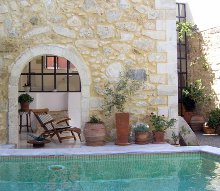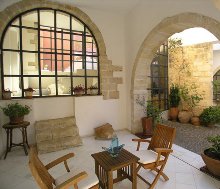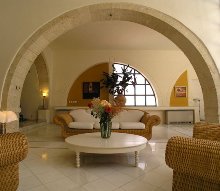News from Villa Maroulas, Crete luxury villas 2011
28/12/2011
New year in Crete
Join us for the new year evening ! The weather is cold, the fireplace of the luxury villa rental is working for all the winter. All the village is going to have raki and mezes for the last dinner of the year. They will drink, eat and play card all night.
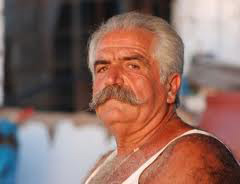
25/12/2011
Heraklion the capital of Crete
The capital of Crete is a very animated and modern city is at the fifth most populous cities of Greece. The Capital of Heraklion is about 65 km from the Villa Maroulas our Luxury privately owned Vacation Villas and Rental Homes in Crete with private pool available to rent all year The per capita income the highest in Greece is the product of the place of Heraklion in the trade of the island and the influx of tourists, thanks to the ancient site of Knossos, 5 km, one of main curiosities of Crete. The Archaeological Museum, which presents a collection of Minoan art, alone justifies a stop in the city. With its 200,000 inhabitants, Heraklion has since 1972 the capital of the island. It's not a very attractive city, most streets are too narrow to contain the traffic, noise and pollution filled the air. Its Archaeological Museum holds a world-class, the Minoan palace of Knossos is the largest archaeological site of the island. You will find the fountain of the same name. This small square is the tourist heart of the city of Heraklion with a lot of restaurants and cafes.
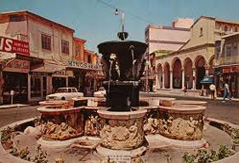
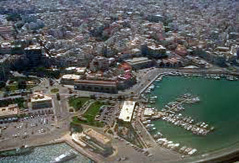
18/12/2011
chrismas in Crete
The Greeks are mostly Orthodox and very attached to their beliefs. This is how Christmas is celebrated in Crete on December 25 to celebrate the birth of Jesus. Then a few days later, a party just as important is that of Jesus' baptism, celebrated January 6 (foton tone). This explains why the Christmas holidays in our self catering vacation rental Villa Maroulas begins December 24 and ends after January 8.
![]()
08/12/2011
Our live in Crete
There are many advantages to live in Crete.and to rent the villa Maroulas Some most telling is the following: First the climate. Winters are mild and snow seldom except in altitude. There is no freezing fog. The wettest periods are in February and March. In summer it never rains! Not to mention the blue sky, a beautiful all day long! Note there are on average 310 days of sunshine a year! The sunrises and sunsets and the stars and full moon. The diversity and beauty of the landscape and environment. Beautiful beaches, majestic mountains, some capped with snow until early June, impressive gorges, hidden caves, ancient sites and picturesque villages that have preserved the character and tradition. In Crete the crime rate is very low. And enjoy the evening stroll to provide peace of mind. If one were to describe Greece and Crete in a word, it would be "peaceful." The closest European destination to the sun. The warmth and hospitality of the Cretans. Crete is renowned world courtesy and helpfulness of its inhabitants
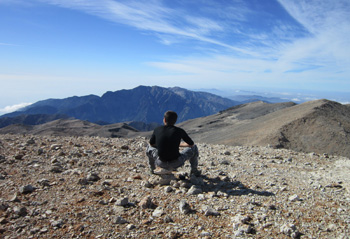
02/12/2011
Chania 60 km from Villa Maroulas holiday rental in Crete
Visit the villages the prefecture of Chania has the interior is a fascinating experience. Most of them are not affected by tourism, and traditional plus maintain their identity in particular with regard to the architecture but also by residents who maintain their proud traditions. It is in these villages that the visitor pourrat understand the characteristics that make the Cretan personality, and hospitality. Go from village to village and a real opportunity for the visitor to discover the prefecture since secondary roads through beautiful locations and will be an unforgettable experience
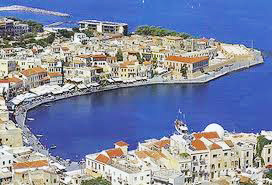
27/11/2011
Chania Prefecture
Chania prefecture has coasts to the north to the south and west: It forms three large bays:The bay of Kissamos, Chania Bay and that of Souda, the latter being better protected against the winds. Souda is one of the largest natural harbors in the Mediterranean Sea. The beaches north and west are in their most highly affected by the northern winds.The Villa Maroulas Villa rental is just 59 km of Souda and 66 from the center of Chania. The southern coasts are open to the south. The beaches are sandy and in part some of them covered gallet. The beaches have crystal clear blue water and the seabed and are very interesting, perfect for fans of underwater activities. The water temperature is mild in the south earlier in the south of Crete.
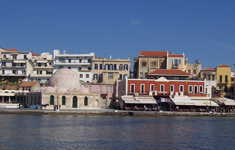
15/11/2011
Formation of the Gorge 1
The gorges are formed in tree stages mainly in carbonate rocks like limestone and marble, as a result of continuous land uplift and erosion by water of the rivers. The land uplift is usually caused by cracks in the earth
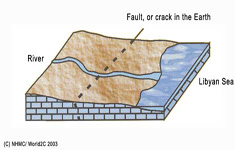
15/11/2011
Formation of the Gorge 2
In The Early stage: Coastal limestone planes crossed by a river, which brings rain water and melted snow down from the mountains.
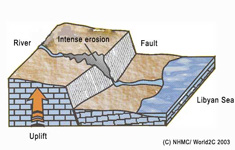
15/11/2011
Formation of the Gorge 3
In the Middle stage: The fault or crack is breaking, due to geological uplift and pressure. A gorge is beginning to be formed. The river in its bed causes immense erosion.
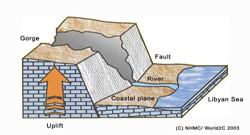
14/11/2011
Formation of the Gorge 4
In the Final stage: Immense erosion by the river and rising of the stone floor continues, widening the gorge. This can be seen at most of the gorges in Crete now, like at Samaria and Imbros gorge. Sometimes a wide coastal plane is formed, like in Frangokastello, Sfakia.
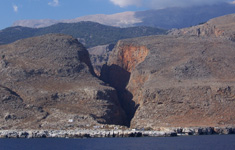
07/11/2011
villa in Crete in the summer 1878
During the Congress of Berlin in the summer of 1878, there was a new insurrection, quickly controlled by British intervention and adaptation of the 1867 Act, known as the Pact Haleppa. Crete and Villa Maroulas vacation rentals became a semi-independent of the Ottoman Empire, headed by a governor who was to be a Christian. Christians like pashas and Adossides Photiades Pasha Pasha ruled the island in the 1880s, presiding over a parliament in which liberals and conservatives fought head. Disputes between the two parties led to a new insurrection in 1889, taking with it the fall of the Pact and its Haleppa arrangements. The great powers, tired of the factional politics, left the Ottoman authorities to send troops on the island but not n'anticipèrent the reactionary and despotic Sultan Abdulhamid II would use this as an excuse to cancel the pact and establish Haleppa instead martial law. This act provoked a wave of sympathy towards the international Cretan Christians for ending the Ottoman occupation. When a small insurgency began in September 1895, she took increasing rapidly and soon became out of control. During the summer of 1896, the Ottoman forces had lost control of virtually the entire island.In March 1897, the great powers decided to restore order by governing again temporarily Crete, by a committee of four admirals who remained in place until the arrival of Prince George, son of George I of Greece. He became the first Governor-General of Crete autonomous island were finally detached from the Ottoman Empire at the end of December 1898.
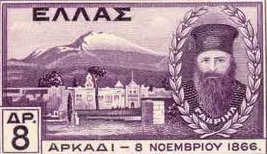
03/11/2011
the independence in 1866
However, a symbolic turning point came in the first months of the 1866 rebellion, when the Cretans blew the Monastery of Arkadi ( 14 km from Villa Maroulas ) , in which 300 men and 600 women and child had fled. When the Turks entered the monastery, the insurgents, preferring to die rather than surrender, set fire to the stock of powder, killing most of the insurgents and hundreds of Turks. This event created an impact in Europe and North America, causing great harm to the legitimacy of the Turkish occupation
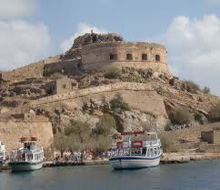
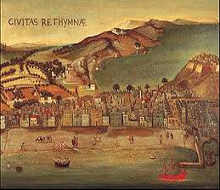
25/10/2011
the villa Maroulas in 1850
After Greece won independence, Crete became the subject of disputes and the Greek population rebelled against both the two new Ottoman occupation (1866 and 1897). Ethnic tension prevailed on the island between the Muslim minority and Christian majority ruling.Aided by volunteers and reinforcements from Greece but also in Britain, America, France and Italy, the "Great Cretan Revolution" began in 1866. The insurgents managed to control most of the hinterland, but as always, the four major cities in the north and south Ierapetra remained in Ottoman hands.Because the loss of Crete was the prelude to a loss of land much more serious in the Balkans, the Grand Vizier Ali Pasha arrived on the village of Maroulas near our villa rental in October 1867 and remained there four months. Ali Pasha was a man of exceptional intelligence, whose qualities impressed even the most hostile observers to the Ottoman Empire. Ali devised a strategy to win back the island district by district and had built forts across the island that should be the basis of the Turkish military power until the final crisis of 1896-1898. More importantly, Ali created a law that gave Christians more equality in the control of the administration.This will ensure a minimum of political cooperation in order to restore order on the island in early 1869 and almost all the rebel leaders are subject to Ottoman rule, including the pro-Russian Hatzimi chalis, remained in exile in Greece.
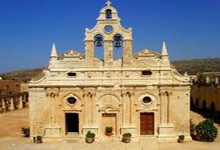
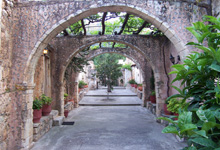
15/10/2011
Villa Maroulas historic vacation rental in Crete
The arrival of Chritianity was during the Roman period appears Christianity in Crete. It is ready to St. Paul the evangelization of Crete, and the organization of the church in the island. Due to a storm, St. Paul stopped the first time in Crete, on the southern coast of the island,Just some km of the Vacation rental villa Maroulas.Limenes Kali ("the beautiful ports"). He returned after his first imprisonment and would have left Titus in Crete, his disciple and first bishop of Gortyna.Tradition has it that Titus himself is Cretan. It would have divided the island into nine dioceses, even if the sources are from the sixth century and can describe the organization of a later period. Christianity seems to encounter strong resistance, especially from the Jewish community's successor Titus, Philip managed to divert the Roman persecutions against the Christians. However, in 250, the persecution of Emperor Decius seem to be particularly hard on Crete. The victims of persecution became the first martyrs of the C hurch of Crete, called the Ten Saints (Agioi Deka). Cyril, bishop of Gortyna itself is executed by the Romans. Saved from the flames by a first miracle, he finally slice tête.Il not until the sixth century to see the first major Christian monument, the basilica of St-Tite Gortyn
5/10/2011
Villa Maroulas authentic villa rental in Crete
In the seventeenth century on the Ottoman periode, Venice was driven out of Crete by the Ottoman Empire, losing most of the island after the siege of Candia (1649-1669), perhaps the longest siege in history. The last bastion of Venice, Spinalonga, fell in 1718, when Crete became part of the Ottoman Empire during the next two centuries. There were significant rebellions against the Turkish occupation, particularly in Sfakia. Daskalogiannis a rebel leader was well known. One consequence of the Ottoman conquest was the large proportion of conversions to Islam.Estimates vary but at the time, on the eve of the Greek War of Independence, about 45% of the population of the island would have been Muslim . This figure declined rapidly during the nineteenth century and estimates of this figure are conflicting, but according to the census of 1881, the Cretan Muslims would still represented 72 000 people (out of 278 908 people) at the end of century .Although some of these Muslims or officials and soldiers from Turkey, the majority was obviously after the local people, speaking Greek, and doing their Muslim prayers in that language. There are still descendants of Turkish-Cretan in several Muslim countries. Each family is trying to claim the ancestors in Anatolia. Which could be historically true if the ancestors were Janissaries. This possibility is strengthened by the fact that many of these families still have ties with the Bektashi dervish order, religious affiliation of the Janissaries.There were also marriages between Christians and Muslims Cretans to the mid-nineteenth century and probably later. In Crete, as in other regions Ottoman, there were also Crypto-Christians of the families who called themselves Muslims but who retained their Christian identity in private. The Greek War of Independence began in 1821 and Cretan participation was important. An uprising of Christians met strong resistance from the Turkish authorities who made several bishops, regarded as ringleaders. Between 1821 and 1828, the island and our Maroulas village was the scene of repeated hostilities. Muslims have come together in large fortified towns on the north coast where it seems that 60% of them died of starvation and disease. The Christian population also suffered severely, losing 21% of its population. In the 1830s, Crete island had become a poor and late. As the Sultan Mahmud II had no army of its own, he had to call to his vassal and rival, the Pasha of Egypt, who sent troops to the island. Britain decided that Crete should not belong to the Kingdom of Greece on the road to independence in 1830, fearing that the island does not again become a haven for pirates or a Russian naval base in the eastern Mediterranean. Therefore, in 1832, a Greek state was created, without only include Crete. The island was then administered by an Albanian from Egypt, Giritli Naili Mustafa Pasha (known as Mustapha Pasha), who tried to create a synthesis of Muslim landowners and the emerging class of Christian merchants. Although the Greek nationalist historiography portrays the Pasha as a person oppressive, the British and French consular observers describe it with caution, as pro-British, and has especially tried to gain the support of the Cretans Christian rather than Muslim Cretans.He also married the daughter of a priest and allowed him t o remain Christian. However, in 1834, a Cretan committee met in Athens to work on the union of the island with Greece. In 1840, Palmerston force Egypt to put Crete and our self catering villa Maroulas under direct Ottoman control. Mustapha Pasha fails to become a Prince of Greece and semi-independent Christians, rather than support it, rose up against him, pushing the Muslim population to take refuge again in the cities. An Anglo-Ottoman naval operation regained control of the island and Mustapha Pasha was confirmed as governor of the island, but this time under the control of Istanbul. He remained chairman until 1851, when he was called to Istanbul, where, despite his relatively advanced age (fifties), he had a brilliant career, becoming Grand Vizier several times. .
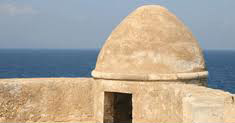
02/10/2011
Crete in the venetian rule
The Fourth Crusade, initially launched against Egypt by Pope Innocent II in 1198, finally led the Crusaders to Constantinople and the sharing of the Byzantine Empire. The Count of Flanders was elected emperor by the Crusaders, while Boniface of Montferrat was proclaimed king of Macedonia and Thessaloniki and Crete has the same time. Genoa and Venice, attracted by the commercial importance of the Aegean islands, each made offers to buy him Montferrat Crete. These are the Venetians prevail in 1204 in exchange for 1,000 ducats and land in Macedonia. The Venetians put at the head of the island ave Jacques Thiepolo the title of Duke of Candia. Few years, Venice and Genoa are fighting for control of the island. If in 1294, the Genoese moving temporarily masters of Chania, yet it is well settled that a Venetian rule in Crete for four centuries The administrative division of the island territory four passes in the early fourteenth century: Chania, Rethymnon, Maroulas, Sitia, Crete. These territories are divided in turn into castellanies (Castelli) and villages (Casali). Only the region of Sphakia is not fully submitted. Handax is the capital of the island but took the name of Candia. The city is the seat of the Duke of Candia, chief magistrate, appointed directly by the Grand Council of Venice for a period of two years. The interest of Venice for Crete is primarily strategic and commercial. Therefore, at first, it settles in the big cities. But Venice eventually occupy the entire island like our vacation rental Villa Maroulas in Maroulas, confiscating land for distribution to the settlers that it promotes immigration in exchange for military service.And the landlords should, in time of war, provide a jumper, two squires, weapons and horses included. Owners must provide more modest ten foot soldiers. Each settler received with 25 serfs land, probably descendants of the Saracens enslaved by Nicephorus Phocas. The culture developed by the Venetians are more speculative food order. Thus, the viticulture and wine knowledge of Rethymnon, boiled for reasons of conservation, is exported to Poland, Germany or Constantinople. By 1428, the cultivation of sugar cane grows before being replaced by cotton. However, the cultivation of cereals is declining in large proportions, on the one hand, to make room for these crops more economically advantageous, but also because sometimes Venice banned the cultivation of wheat in the most fertile regions in order to avoid both too large gatherings of slaves in the same places, but also to provide supply bases in case of revolt. Crete becomes dependent on the arrival of shipments of wheat from Thrace and Egypt. .
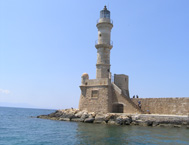
29/09/2011
our island in the Micenaen periode
The eruption of Santorini to -1400 is fatal to the Minoan civilization. The earthquake caused as a result of the eruption and the destruction of the cities it creates, promotes the incursions of the Mycenaeans. The traces of Mycenaean settlement on the island seem obvious from -1380. This new phase of history is called Minoan Crete, Mycenaean, which means that the island becomes part of the Mycenaean world, a dependency of the continent,but it does not lose its identity as. The city of the Peloponnese was instrumental in Crete at the end of the Minoan period. Mycenaean presence is attested by the legends of later times and the names of certain places. Agamemnon, king of Mycenae is the founder of Lappa, Tegea, or Pergamos. Place names like Arcadia or Gortyn are of Peloponnesians and could be remnants of the Mycenaean occupation. Homer in the Iliad, mentions seven Cretan cities that take part in the war against Troy, led by Idomeneo and other lords, themselves directly under the command of Agamemnon. The 80 ships provided by the Cretans make it one of the largest contributor to the Trojan War and show that the island is not completely ruined by the eruption. It was at this time that the Greek gods are imported instead of Minoan gods. Zeus, Poseidon, Hera, Athena replace the mother goddess. Elements of Minoan religion remain, as evidenced by the Linear B tablets mention a priestess of the winds or mistress of the labyrinth. The cult of the infant Zeus is also seen as Cretan.Conversely, Knossos influence still some areas of the Aegean in some areas: weapons and jewelry created at Knossos are adopted by the continent. towards the end of XII century, Crete knows upheaval related to the peoples of the sea, although their impact is less strong than in mainland Greece. The higher the stronger the change that takes place after the catastrophe of Mycenae: groups of people from around the Peloponnese settled in Crete. New elements appear in the life of the Cretans as cremation of the dead, the use of iron, clothes pin, the geometric decoration of pottery. These new elements would be inheritance Dorian .
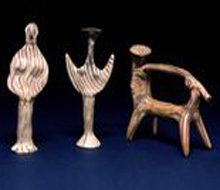
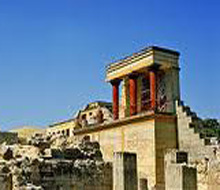
27/09/2011
Villa Maroulas accomodation in the island of Crete
Minoan civilization is the most important civilization of the Bronze Age of the Greek world. Arthur Evans's thesis that the introduction of metals in Crete is due to immigrants from Egypt is now over. The current theory is in favor of the fact that the entire Aegean region is at that time inhabited by a people referred to as pre-Hellenic or Aegean. Egypt seems too distant to exert a great influence at that time. On the contrary, the Anatolia which plays a convincing role in the initiation of Crete to the arts of metals. The spread of the use of bronze in the Aegean is related to large population movements from the coast of Asia Minor to Crete, the Cyclades and southern Greece. These regions are entering a phase of rapid social and cultural development, marked mainly by the expansion of trade relations with Asia Minor and Cyprus. With its navy, Crete occupies a prominent place in the Aegean. The use of metals increases the transaction with the producing countries: the Cretans will seek copper in Cyprus, in Egypt the gold, silver and obsidian in the Cyclades. Ports are growing under the influence of this increased activity: and on the east coast, the islands and on the north coast are becoming the main shopping centers with Asia Minor. The importance of Asia Minor in relations with Crete explains the preponderance of the eastern part of the island which is the most active focus of Crete. While Knossos knows that even sub-Neolithic civilization, without metal, Malia is figure metropolis. It was then that communities of farmers and ranchers thrive in the plain of Messara. The widespread use of bronze moves the center of gravity of the island towards the center, including the cities began to compete with the cities of the eastern part. In addition, new materials divert attention from the Cretans of Asia Minor.For example, tin from Spain, Gaul, and arrives on the Cornish coast of Sicily and the Adriatic and some cities orient their trade to those regions. Thus the mouth of Kairatos develops a road through the middle of Crete Knossos and Phaistos with as main steps. Regarding agriculture, it is known through the excavations that almost all known species of cereals and legumes are grown and all agricultural products still known today as oil, olives, wine, grapes already occurred at that time. .
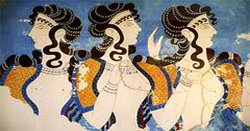
26/09/2011
Villa Maroulas historic vacation rental in Crete
"We know little about the appearance of the ancient Cretan civilization because of the little evidence we have received. This contrasts with the palaces, houses, roads, paintings and sculptures that they still exist. The story is bathed in Cretan legends (such as those of King Minos, Theseus, the Minotaur, Daedalus and Icarus) that have survived through Greek poets and historians. A lack of evidence, the chronology of Crete is based on the style of pottery Aegean and Near East, so the timelines of Crete were performed by looking for items sold with other civilizations (Egyptian by example) - a common method.In earlier times, the carbon-14 dating of organic remains and charcoal offers independent dates. From these, it is thought that Crete was inhabited from the 7th millennium BC. AD The installation of humans is attested since the Neolithic. Remains dating from the Palaeolithic were found but no evidence is convincing enough for the moment, however it seems that the idea of occupation from the Palaeolithic is increasing. The fauna of Crete was then a Pleistocene fauna with pygmy hippos, whose remains were discovered on the set of Katharos in the mountains of Lassithi-, horses, dwarves, dwarf elephant, dwarf deer (Praemegaceros cretensis), rodents giants, insectivores, badgers, otters and a kind of land. There was no large carnivores. Most of these animals disappeared at the end of the last glaciation.It is not certain that man has played a role in the extinction, which is found on other Mediterranean islands like Sicily, Cyprus and Mallorca. To date, no bones of this endemic fauna has been found in Neolithic sites. The first inhabitants then introduce cattle, sheep, goats, pigs and dogs, but also the cultivation of cereals and vegetables. So far Knossos, whose occupation of the site dates back to the 7th millennium BC (layer X), is the only site aceramic (or pre-ceramic). The site then covered 350 000 square meters. The few bones found are those animals mentioned above as well as deer, badger, marten and mouse: the local extinction of megafauna did not leave a lot of game. Neolithic pottery was found at Knossos, the caves of Lera and Gerani. The late Neolithic saw the proliferation of sites, thus showing a population growth.During this time the donkey and rabbits are introduced on the island, hunted deer and Agrim. The Agrim, a wild goat, retains the features of the first domestication. Horses, deer and hedgehogs are certified to the Minoan times now. The ceramics from the Neolithic change throughout this period. Simple and without decoration in the early Neolithic, they eventually become more sophisticated, with engravings. Black and red, these ceramics were fired in kilns. The first statues appeared at that time, made of clay, stone, slate or marble. At the end of the Neolithic, they generally represent female figures with the body parts on fertility set values (stomach, thighs, breasts) "
23/09/2011
Palm beach of Preveli
Preveli beach is located on the central south coast of the island, just 39 km from the villa Maroulas The Libyan Sea forming a cool lagoon and the main springs of the river are virtually in the center of the gorgeThe sandy beach looks like a tropical oasis The whole area is quite remarkable for its fertility and the richness of the flora and fauna.was a long time a haven for hippiesis.The upper monastery founded by Father Jacob Preveli, has been for centuries an important role as research centerand contains beatiful religious relics and icons.
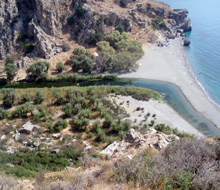
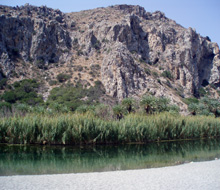
18/09/2011
Villa Maroulas Boat trip 2011
The boat trips usually start at 10:00 am from the Old Harbour of Chania. Our destinations are beaches and small islands around the Chania bay such as Maherida, ,Theodorou, Lazaretta and Menies. Beaches and isles so close to Chania, yet, reaching them by boat gives a whole new perspective and uniqueness to them. The weather will always determine the direction we will follow. We return back around 17:00-17.30pm.During our trip and several stops for a swim, light snacks and of course wine (bottled), beers or soft drinks will be served. Just wear your swimsuit, get that towel and sunscreen and let us enjoy all together an superb day out!.
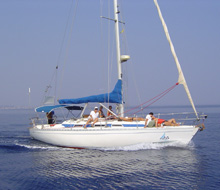
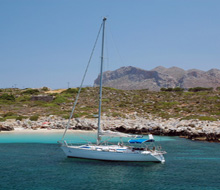
16/09/2011
Samaria gorge
"The Passage of the Gorge is a unique and fascinating experience. The hiker is confronted with nature and wild beauty."
15/09/2011
Wine in Crete
One of the earliest known wine presses was discovered in Palekastro in Crete, and it is from Crete that the Mycenaeans are believed to have spread viticulture to other islands of the Aegean Sea and quite possibly to mainland Greece.

